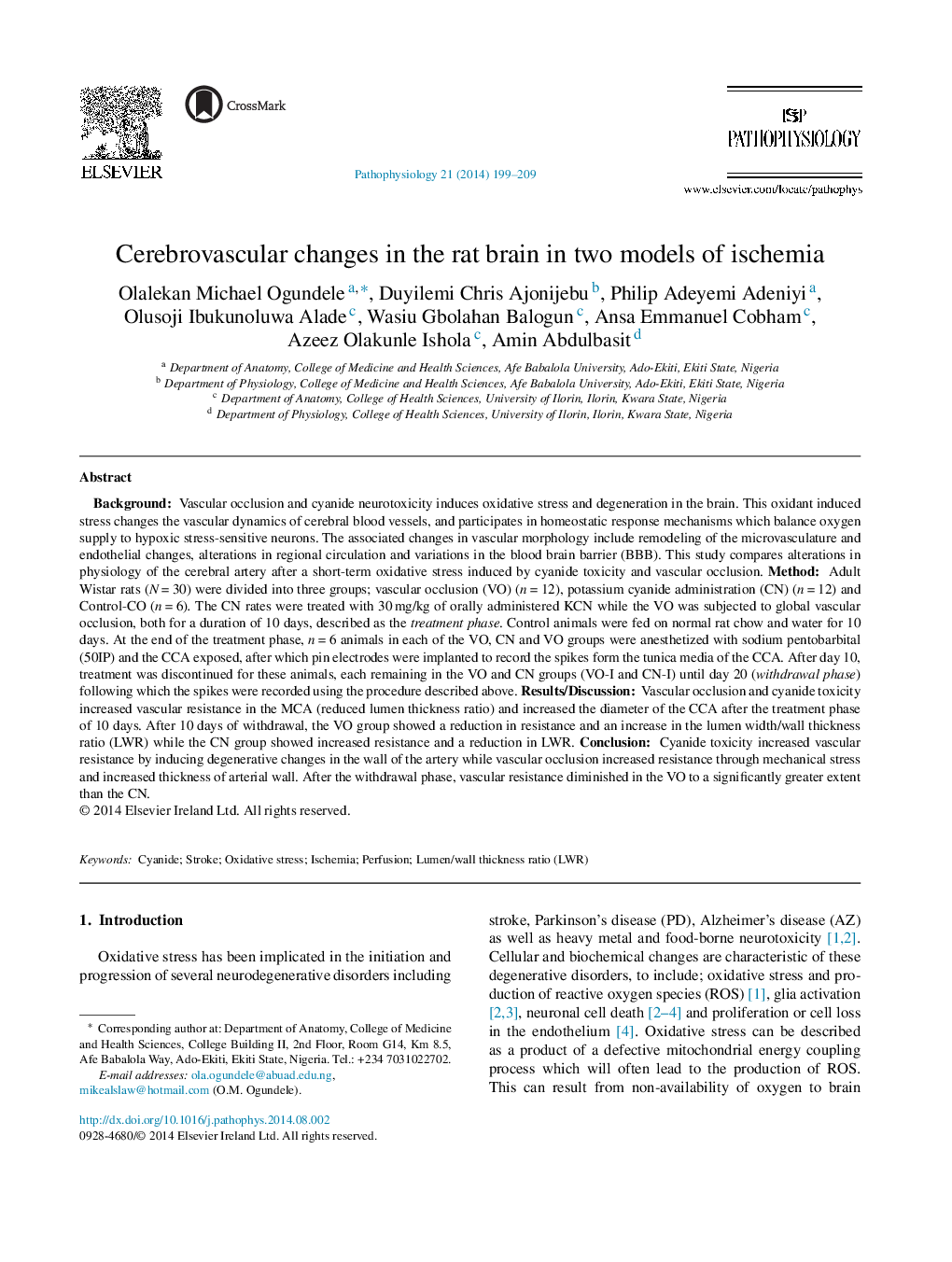| کد مقاله | کد نشریه | سال انتشار | مقاله انگلیسی | نسخه تمام متن |
|---|---|---|---|---|
| 4137024 | 1272000 | 2014 | 11 صفحه PDF | دانلود رایگان |
BackgroundVascular occlusion and cyanide neurotoxicity induces oxidative stress and degeneration in the brain. This oxidant induced stress changes the vascular dynamics of cerebral blood vessels, and participates in homeostatic response mechanisms which balance oxygen supply to hypoxic stress-sensitive neurons. The associated changes in vascular morphology include remodeling of the microvasculature and endothelial changes, alterations in regional circulation and variations in the blood brain barrier (BBB). This study compares alterations in physiology of the cerebral artery after a short-term oxidative stress induced by cyanide toxicity and vascular occlusion.MethodAdult Wistar rats (N = 30) were divided into three groups; vascular occlusion (VO) (n = 12), potassium cyanide administration (CN) (n = 12) and Control-CO (n = 6). The CN rates were treated with 30 mg/kg of orally administered KCN while the VO was subjected to global vascular occlusion, both for a duration of 10 days, described as the treatment phase. Control animals were fed on normal rat chow and water for 10 days. At the end of the treatment phase, n = 6 animals in each of the VO, CN and VO groups were anesthetized with sodium pentobarbital (50IP) and the CCA exposed, after which pin electrodes were implanted to record the spikes form the tunica media of the CCA. After day 10, treatment was discontinued for these animals, each remaining in the VO and CN groups (VO-I and CN-I) until day 20 (withdrawal phase) following which the spikes were recorded using the procedure described above.Results/DiscussionVascular occlusion and cyanide toxicity increased vascular resistance in the MCA (reduced lumen thickness ratio) and increased the diameter of the CCA after the treatment phase of 10 days. After 10 days of withdrawal, the VO group showed a reduction in resistance and an increase in the lumen width/wall thickness ratio (LWR) while the CN group showed increased resistance and a reduction in LWR.ConclusionCyanide toxicity increased vascular resistance by inducing degenerative changes in the wall of the artery while vascular occlusion increased resistance through mechanical stress and increased thickness of arterial wall. After the withdrawal phase, vascular resistance diminished in the VO to a significantly greater extent than the CN.
Journal: Pathophysiology - Volume 21, Issue 3, September 2014, Pages 199–209
